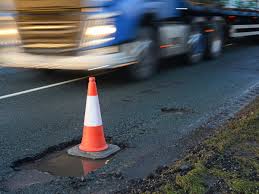
Potholes, cracks, and constant repairs have long been the bane of modern infrastructure. Every year, cities spend billions of dollars maintaining road networks, yet drivers still encounter bumpy rides and unsafe surfaces. But what if roads could heal themselves, just like skin mending after a cut? Thanks to breakthroughs in material science, the idea of self-healing roads is moving from futuristic fantasy to practical reality.
1. What Are Self-Healing Roads?
Self-healing roads use innovative materials that can automatically repair cracks and damage without human intervention. Instead of waiting for maintenance crews, the road itself:
- Detects micro-cracks before they expand.
- Activates repair mechanisms through heat, pressure, or chemical reactions.
- Restores its structure, prolonging its lifespan.
The goal is to make roadways smarter, longer-lasting, and far more cost-effective.
2. The Science Behind It
Several technologies are being tested around the world:
- Asphalt with Steel Fibers: By embedding tiny steel fibers in asphalt, engineers can use induction heating to warm the road, causing the asphalt to “flow” back into cracks and seal them.
- Microcapsules of Healing Agents: Some experimental roads contain capsules filled with oil or glue-like substances that break open when cracks form, automatically sealing the gaps.
- Bacteria-Based Concrete: Special bacteria mixed into concrete can produce limestone when exposed to water, filling in small cracks and preventing larger damage.
Each approach relies on the principle of autonomous repair, reducing the need for constant manual fixes.
3. Benefits of Self-Healing Roads
- Lower Maintenance Costs: Fewer repairs mean significant savings for governments and taxpayers.
- Increased Safety: Cracks and potholes are major hazards—eliminating them reduces accidents.
- Sustainability: Extending road life reduces the environmental impact of producing new asphalt and concrete.
- Efficiency: Less roadwork means fewer traffic delays and disruptions.
In short, self-healing roads could revolutionize transportation infrastructure.
4. Real-World Experiments
- The Netherlands has pioneered steel-fiber asphalt roads, which are already being tested on highways.
- The UK has funded research into self-healing concrete for bridges and motorways.
- In the U.S. and Asia, startups are experimenting with nanotechnology and polymers to make longer-lasting road surfaces.
These trials show that the concept is not only feasible but already making its way into real infrastructure projects.
5. The Challenges Ahead
- High Initial Costs: Self-healing materials are more expensive upfront, though they save money long-term.
- Scalability: Adapting the technology for large-scale road networks remains a challenge.
- Durability Proof: More real-world testing is needed to prove that self-healing roads can withstand decades of heavy use.
Despite these hurdles, the potential savings and safety improvements make this technology highly promising.
Final Thoughts
The science of self-healing roads is opening the door to a future where infrastructure is smarter, greener, and safer. Instead of crumbling highways and endless repairs, we may soon have roads that repair themselves, cutting costs, improving travel, and transforming the way we build cities.